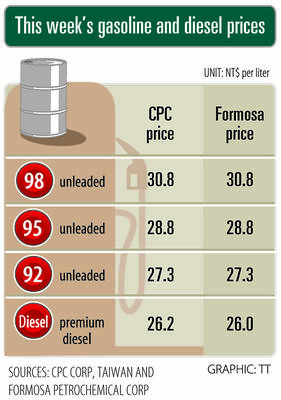Investors and market watchers should view economic statistics announced by Beijing with caution, as the overly rosy figures are the result of Chinese manipulation, a Chinese economics scholar warned yesterday.
"The high growth rate of 8 percent forecast for the year is a myth and is unreliable," said Cheng Xiaonong (程曉農), vice president of the Center for Modern China in the US, in a speech organized by the Chung-Hua Institute of Economic Research (CIER, 中經院).
Cheng, a prodigy of former Chinese president Zhao Ziyang (
The statistics-gathering process is distorted through bureaucratic manipulation and the final GDP figures released to the media are entirely for propaganda purposes, he said.
According to Cheng, GDP should not serve as the only index with which to gauge the Chinese economic situation, as there are other factors including the jobless rate, the consumer price index (CPI) and enterprise utilization rate to be taken into account.
He said that most of the critical indices -- including the unemployment rate -- were not released by the authorities. And though the official Chinese data showed that the jobless rate stands at around 3.4 percent, his research in 2002 indicated it was already as high as 20 percent.
"By taking all indices into account, China's 8 percent growth is equivalent to 1 percent to 2 percent of its US counterpart ? All this does not hide the fact that the Chinese economy is starting on a downward trend," he said.
As the CPI across the Taiwan Strait remains at a historical low, domestic demand is being drag-ged down at the same time. Therefore, it is contradictory to say that the Chinese economy is growing at such a fast pace when there is such low domestic demand, he said.
To counter this, Beijing has resorted to alternatives, including looking for overseas investment and boosting real-estate development. But these drivers will not last forever, he said.
However, another academic said that even though the 8 percent growth figure might be controversial, in reality it might be just 1 percent to 2 percent lower.
"We can't deny the fact the Chinese economy is indeed growing at a rapid pace," said Chuang Yih-chyi (莊奕琦), an economics professor at National Chengchi University.
The debate should not be centered around the exact growth figure, but rather on how China applies its burgeoning economic scale to every aspect of the nation, such as resource sharing, infrastructure building and other mat-ters such as law and regulation improvement.

Taiwan Semiconductor Manufacturing Co (TSMC, 台積電), the world’s biggest contract chipmaker, booked its first-ever profit from its Arizona subsidiary in the first half of this year, four years after operations began, a company financial statement showed. Wholly owned by TSMC, the Arizona unit contributed NT$4.52 billion (US$150.1 million) in net profit, compared with a loss of NT$4.34 billion a year earlier, the statement showed. The company attributed the turnaround to strong market demand and high factory utilization. The Arizona unit counts Apple Inc, Nvidia Corp and Advanced Micro Devices Inc among its major customers. The firm’s first fab in Arizona began high-volume production

VOTE OF CONFIDENCE: The Japanese company is adding Intel to an investment portfolio that includes artificial intelligence linchpins Nvidia Corp and TSMC Softbank Group Corp agreed to buy US$2 billion of Intel Corp stock, a surprise deal to shore up a struggling US name while boosting its own chip ambitions. The Japanese company, which is adding Intel to an investment portfolio that includes artificial intelligence (AI) linchpins Nvidia Corp and Taiwan Semiconductor Manufacturing Co (TSMC, 台積電), is to pay US$23 a share — a small discount to Intel’s last close. Shares of the US chipmaker, which would issue new stock to Softbank, surged more than 5 percent in after-hours trading. Softbank’s stock fell as much as 5.4 percent on Tuesday in Tokyo, its

The prices of gasoline and diesel at domestic fuel stations are to rise NT$0.1 and NT$0.4 per liter this week respectively, after international crude oil prices rose last week, CPC Corp, Taiwan (台灣中油) and Formosa Petrochemical Corp (台塑石化) announced yesterday. Effective today, gasoline prices at CPC and Formosa stations are to rise to NT$27.3, NT$28.8 and NT$30.8 per liter for 92, 95 and 98-octane unleaded gasoline respectively, the companies said in separate statements. The price of premium diesel is to rise to NT$26.2 per liter at CPC stations and NT$26 at Formosa pumps, they said. The announcements came after international crude oil prices

SETBACK: Apple’s India iPhone push has been disrupted after Foxconn recalled hundreds of Chinese engineers, amid Beijing’s attempts to curb tech transfers Apple Inc assembly partner Hon Hai Precision Industry Co (鴻海精密), also known internationally as Foxconn Technology Group (富士康科技集團), has recalled about 300 Chinese engineers from a factory in India, the latest setback for the iPhone maker’s push to rapidly expand in the country. The extraction of Chinese workers from the factory of Yuzhan Technology (India) Private Ltd, a Hon Hai component unit, in southern Tamil Nadu state, is the second such move in a few months. The company has started flying in Taiwanese engineers to replace staff leaving, people familiar with the matter said, asking not to be named, as the